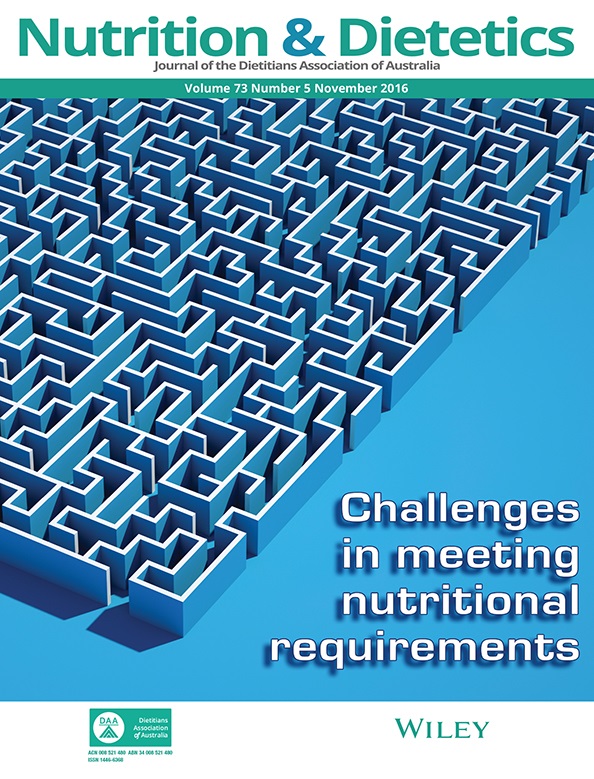Evaluation of an electronic tool to assess food label literacy in adult Australians: A pilot study
Abstract
Aim
This pilot study aimed to evaluate the food label literacy component of an electronic-Nutrition Literacy Tool (e-NutLiT) designed to assess nutrition literacy in adult Australians, and explore the influence of demographic factors.
Methods
Obese participants (OP) from an Australian obesity clinic and a criterion group of dietetic students (DS) from two Australian dietetic programs were recruited to complete the e-NutLit; OP also completed the ‘Newest Vital Sign’ (NVS), a health literacy screening tool. Construct validity was assessed by comparing scores from the two groups. Associations between demographic factors and e-NutLit scores were also explored.
Results
Sixty-one participants (OP: n = 32; DS: n = 29) completed the study. The total e-NutLit scores for OP was significantly lower than that of DS (71.9 ± 17.9%; 94.5 ± 5.6%, respectively: P = 0.01). Items requiring calculation of nutrient intake from the nutrition information panel (NIP) and interpreting endorsement logos were the worst performing sections on the e-NutLit in both OP (35.9%; 71.9%) and DS (86.2%; 75.8%). Adequate health literacy, indicated by an NVS ≥ 4, was strongly associated with higher scores on the e-NutLit in OP (P = 0.01). Level of education (≤year 10) and lack of engagement in food shopping were significantly associated with poorer competency on the e-NutLit (P < 0.05).
Conclusions
Comparison of scores indicated that construct validity was established on most items for participants with lower literacy. The e-NutLit identified specific weaknesses, such as nutrient calculations and interpretation of endorsement logos. This pilot study will help inform further development of the e-NutLit.




